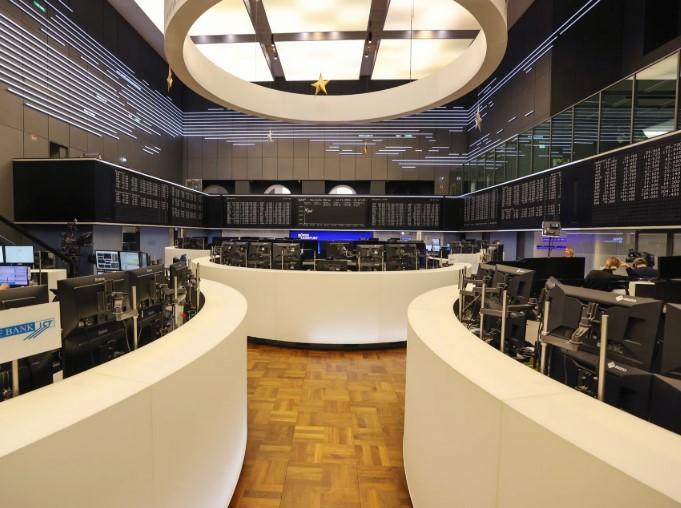The unemployment rate, i.e. the percentage of people in the labor force but not working, fell further in the first quarter of 2023, according to Eurobank’s weekly report, titled “7-DAY ECONOMY”. Specifically, according to the monthly labor force survey of the Hellenic Statistical Authority (ELSTAT), the ratio of the unemployed to the labor force (seasonally adjusted data) stood at 10.8% (3-month average) from 11.8% in the fourth quarter 2022 and 13.1% in the first quarter of 2022.
The corresponding figures in the rest of the Eurozone countries were as follows: Spain 12.9%, Greece 10.8%, Italy 7.9%, Cyprus 7.1%, France 7.0%, Portugal 6.9%, Finland 6 ,7%, Latvia 6.7%, Eurozone 6.6%, Lithuania 6.4%, Croatia 6.3%, EU-27 6.0%, Slovakia 6.0%, Belgium 5.8%, Estonia 5.3%, Austria 4.9%, Luxembourg 4.7%, Ireland 4.1%, Netherlands 3.5%, Slovenia 3.2%, Malta 3.0% and Germany 2.9%.
Compared to the historical high of the third quarter of 2013 (28.1%), the unemployment rate in Greece in the first quarter of 2023 was down by 17.3 percentage points, nevertheless compared to pre-debt crisis levels (7.6% in the second quarter of 2008) was 3.2 percentage points higher.
It is worth noting that the annual decrease in the unemployment rate in Greece in the first quarter of 2023 was the highest among the Eurozone countries (2.3 percentage points), far exceeding the corresponding change in Spain (0.4 percentage points).
The role of the reduction of unemployed persons driven out of the labor force
With regard to the two variables that make up the unemployment rate, i.e. the number of employed and the number of unemployed, the results were as follows in the first quarter of 2023: the employed were 4,136.6 thousand people (3-month average ) from 4,142.4 thousand people in the fourth quarter of 2022 and 4,116.4 thousand people in the first quarter of 2022.
Consequently, the labor productivity factor – measured on the basis of the number of persons employed – showed a marginal quarterly decrease of 0.1% and a mild annual increase of 0.5% in the first quarter of 2023 (Figure 2.1). The number of unemployed people stood at 501.0 thousand people (3-month average) from 551.7 thousand people in the fourth quarter of 2022 and 620.0 thousand people in the first quarter of 2022, marking a strong quarterly and annual contraction (9, 2% and 19.2% respectively).
Based on these results, the labor force (employed + unemployed = 4,637.6 thousand people) shrank both quarterly and annually in the first quarter of 2023, reflected in the decline in the participation rate (the percentage of the population belonging to labor force) to 59.4% from 60.0% in Q4 2022 and 60.4% in Q1 2022. The corresponding size in the Eurozone in 2022 was 65.1%.
Therefore, the strong decrease in the unemployment rate in the first quarter of 2023 is not only due to the increase in employment, but a significant role was played by the decrease in the number of unemployed people who were driven out of the labor force.
It is worth noting that seasonal factors can to a certain extent interpret the above changes, as the first quarter of each year is the period after the Christmas holidays and before the start of the tourist season, with the latter appearing in the observation for employment of Mar-23.
The demographics
The aforementioned figures show that the maintenance of employment on an upward trajectory in the coming years is linked, among other factors, to the increase in the participation of more and more people in the labor force.
For example, if the participation rate in Greece in the first quarter of 2023 was equal to the corresponding one in the Eurozone, then the labor force would be higher by 439.5 thousand people (9.5%) with significant benefits for employment and productivity of the economy.
Investments, structural reforms, credibility in the exercise of economic policy and confidence in the positive prospects of the economy play a decisive role in this field.
They create conditions for the increase of the labor force (through the creation of new jobs, the increase of productivity and real wages, which will strengthen the incentives for the integration of more people into the labor force and the return of many Greek men and women who left abroad during the great recession and the great stagnation), which in the medium term may offset the negative consequences of the demographic problem.








![Ελευθέριος Βενιζέλος: «Πέταξε» η επιβατική κίνηση το 2025 [πίνακες]](https://www.ot.gr/wp-content/uploads/2026/01/aerodro-300x300.jpg)




















![Ελευθέριος Βενιζέλος: «Πέταξε» η επιβατική κίνηση το 2025 [πίνακες]](https://www.ot.gr/wp-content/uploads/2026/01/aerodro.jpg)











